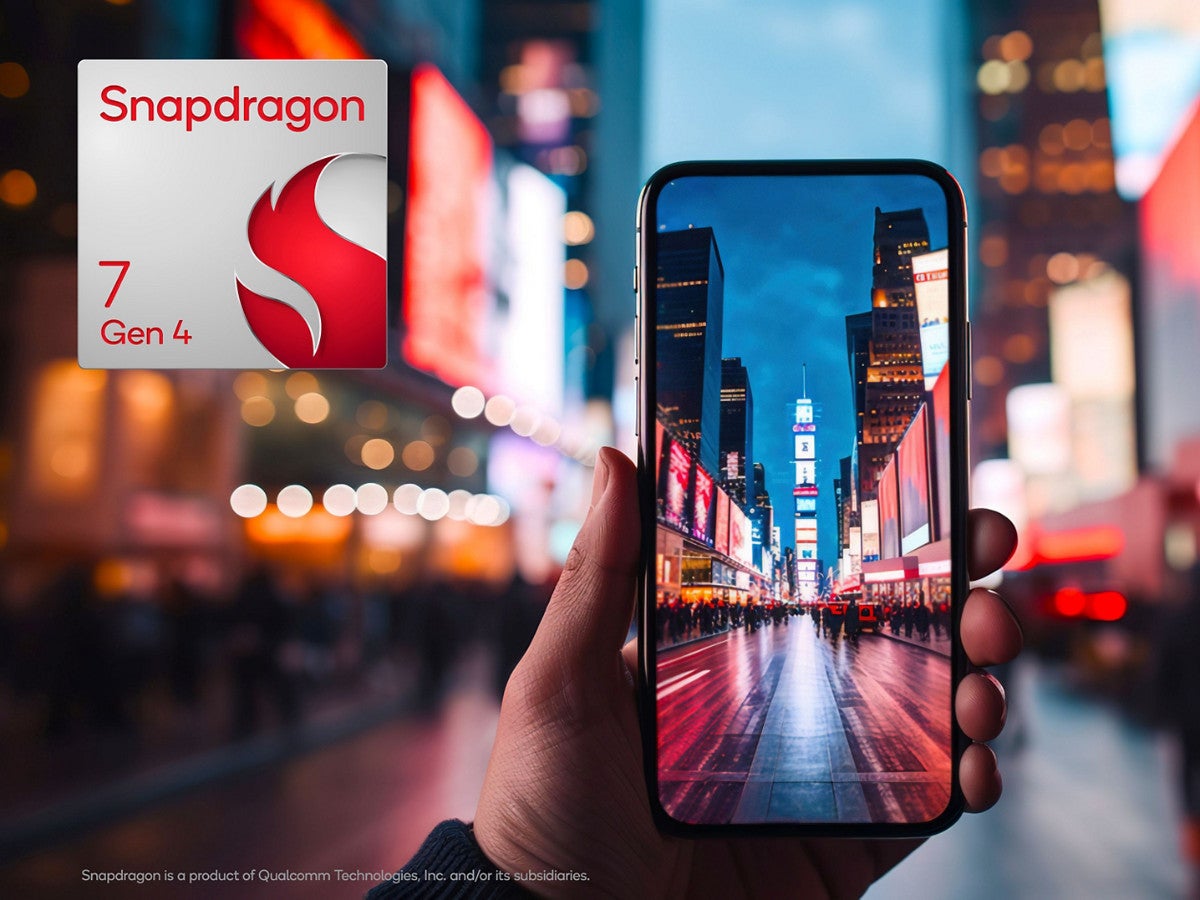More performance for the mid-range: The latest generation of the Snapdragon 7 should also provide more gaming fun in cheaper smartphones. AI applications provide the necessary prerequisites for this.
Computer chips from US manufacturers are becoming increasingly difficult to obtain for buyers from China. However, this does not (yet) apply to Qualcomm's smartphone SoCs. As part of the presentation of the Snapdragon 7 Gen 4, three smartphone manufacturers from the People's Republic announced their intention to install the processor in their own devices in the near future. Both Honor and Vivo plan to unveil correspondingly equipped models later this month. Realme will also rely on the new SoC, which promises a significant leap in performance for the mid-range segment.
Core upgrade and slightly more clock speed
The manufacturer is focusing primarily on improving details. The SoC will continue to be manufactured using the 4-nanometer process. As with its predecessor, the CPU consists of a total of eight cores. The underlying principle remains the same, but minor changes have been made to the architecture and the clock frequencies have been increased.
At the top is a so-called prime core on ARM's Cortex-A720 architecture with a clock speed of up to 2.8 GHz. It is followed by four further Cortex-A720 cores, which are clocked slightly lower at 2.4 GHz. For less demanding tasks, three economical Cortex A520 cores are used, which have to make do with a clock speed of 1.8 GHz.
Qualcomm has held back with changes to the graphics unit. According to the data sheet, the Adreno GPU, which was also not specified, has the same capabilities as the one used in the predecessor. The manufacturer has presumably remained true to the graphics unit and has merely increased the clock frequency slightly so that the rendering performance, together with the faster memory, should be around 30 percent higher.
NPU gets more memory
One reason for the higher graphics performance is the faster memory connection. The RAM size remains limited to a maximum of 16 GB and continues to support LPDDR5X, LPDDR5 and LPDDR4. What is new, however, is that the RAM now allows transfer rates of up to 4,200 MT/s. With the Snapdragon 7 Gen 3, data could be transferred at a maximum of 3,200 MT/s.
The Neural Processing Unit (NPU) also benefits: it can now access twice the amount of memory. Qualcomm does not provide further details on the optimizations, but speaks of a 65 percent performance boost. Support for AI assistants and large language models is said to have been significantly improved as a result.
Wi-Fi 7 and XPAN improve connectivity and audio quality
The Snapdragon 7's network technology has also been brought up to date. While the integrated 5G modem has remained largely unchanged, the new SoC now supports the latest Wi-Fi standard Wi-Fi 7. Qualcomm's XPAN (Expanded Personal Area Network) technology has also been introduced. It enables the transmission of audio data via Wi-Fi - with greater range, better quality and lower power consumption.
However, the receiving device - such as headphones or speakers - must also support XPAN in order to benefit from the advantages.
https://www.inside-digital.de/news/staerkere-handys-diese-hersteller-ruesten-ihre-mittelklasse-auf




